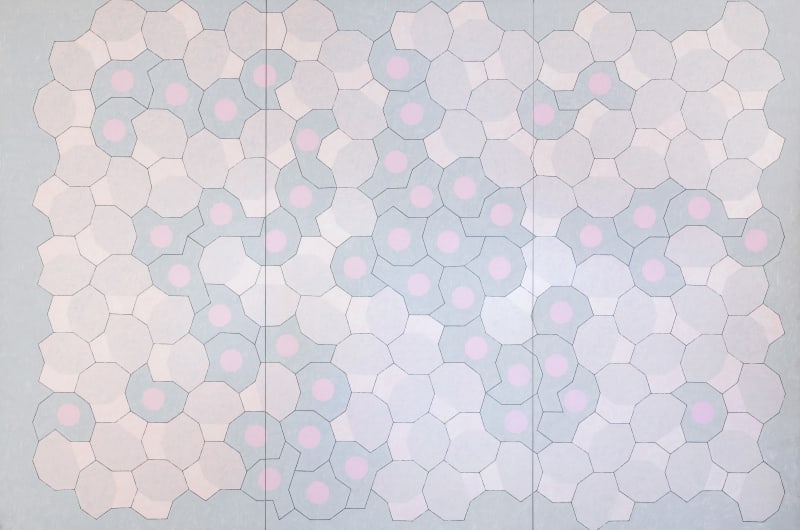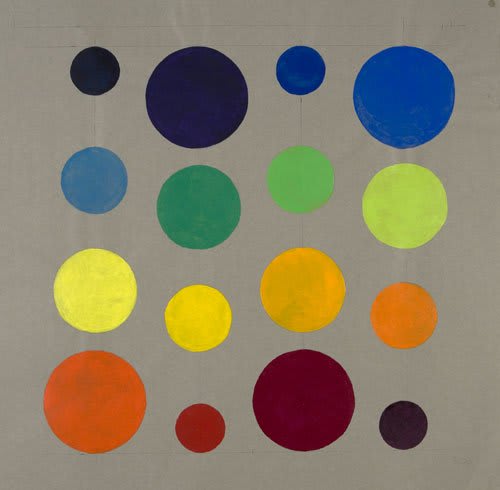
Michael Kidner
Biography
MICHAEL KIDNER (RA) (1917-2009)
A pioneer of Optical Art, Michael Kidner devoted much of his career to developing work of a constructive nature. Both rational and playful, his art has combined visual responses to the principles of mathematics, science and chaos theories with an abiding interest in the irrational and unpredictable nature of the human condition. Kidner was described by American art historian and critic Irving Sandler as “arguably the first Op Artist in Britain”, following his investigations of the optical effects of light, colour and systemic structure during the 1960s. Optics presented Kidner with a challenge in his pursuit of a pure form of imagery, seeking a phenomenological approach to the fluctuating effects of light and colour within the space set by the canvas. He has said: “Unless you read a painting as a feeling then you don’t get anything at all.”
Born in Northamptonshire, Kidner studied History and Anthropology at Cambridge University. Subsequently, he studied Landscape Architecture in Ohio, before joining the Canadian army during WWII. After the war, Kidner returned to the United Kingdom, and embarked on a career as an artist. His work was first displayed in New York in 1965, in The Responsive Eye at the Museum of Modern Art, a group exhibition which subsequently toured the United States; and in a solo show two years later at Betty Parsons Gallery, New York in 1967. During the 1960s Kidner was associated with the Systems group of artists and was included in an Arts Council touring exhibition of Systems art in 1972–73 that originated at the Whitechapel Art Gallery in London, some of which was displayed at Tate Britain in 2017. A retrospective at the Serpentine Gallery, London in 1984 introduced a new generation of British artists to his work, and he was elected as a Royal Academician in 2004. His work has recently been acquired by the British Academy, UK, and the Museum of Contemporary Art, Buenos Aires, Argentina; and is represented in the public collections of Arts Council England, British Council, Government Art Collection, and Tate, UK; Museum of Modern Art, New York; Calouste Gulbenkian Foundation, Lisbon; and Muzeum Sztuki, Lódz, Poland.
Paintings
Prints





Sculpture
Works on Paper
Exhibitions
Shop















































































































